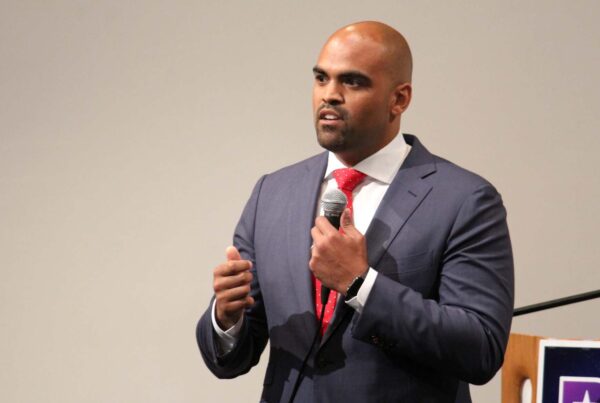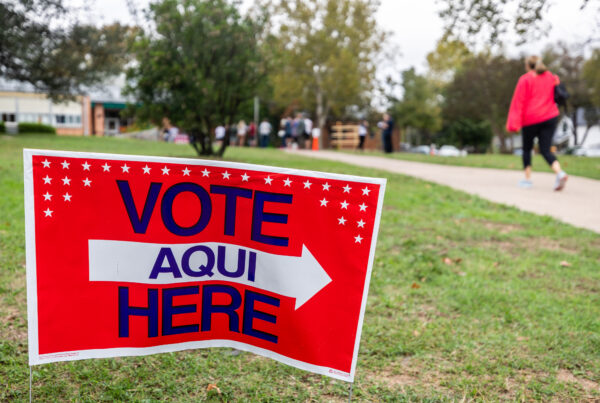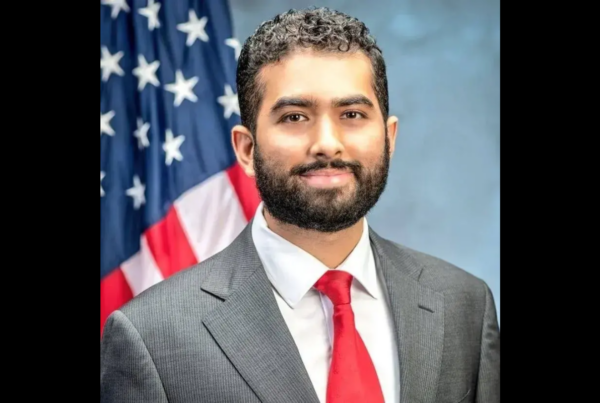There are few musicians in Texas with as much knowledge about the Lone Star State and its music who can hold a candle to Ray Benson.
The multiple Grammy-winning longtime leader of Asleep at the Wheel, singer, songwriter and iconic raconteur is a Texas institution unto himself, all of which helps to explain why San Antonio’s Briscoe Western Arts Museum is bringing him to the stage for the reboot of the event series “Voices of the West: Living Legends.” This is an event that benefits both the Alamo and the Briscoe.
Benson will be interviewed on stage by John Spong, of Texas Monthly fame and host of the “One by Willie” podcast, on Wednesday, Sept. 11 at the Briscoe Western Art Museum Jack Gunther Pavilion.
Benson joined the Standard ahead of the event. Listen to the interview above or read the transcript below.
This transcript has been edited lightly for clarity:
Texas Standard: “A living legend of Texas.” You know, no one would argue with that, but that’s a lot to put on the shoulders of a Jewish kid from Philly. I don’t think I ever asked you what drew you down to Texas in the first place?
Ray Benson: Three people, really. Eddie Wilson brought us down to play the Armadillo, Doug Sahm became my best pal, and Willie Nelson. And Willie said, “I’ll put you on shows.” Now, you got to understand that meant $100 to open the show.
So all the way down from Paw Paw, West Virginia to Texas.
Yeah, we went by way of California. And of course, we’d gone out to the Bay area – you know, Oakland, Berkeley. Got a record deal because old Van Morrison had heard us and mentioned us and Rolling Stone put us on a bunch of shows and all of a sudden we were a hot topic.
What was the year there?
’72. I got there in August of ’71.
We were backing up country western singers Stoney Edwards, Freddie Hart, Connie Smith, and that’s where I met Willie. He was on the road. We were backing up all these country singers, you know. But having those recommendations to come on down was “hell yeah.”
Well, I know you’ve been friends with Willie since way back – did an iconic album with him a few years back. I think that’s something we all have to have in our collection. I know I listen to it frequently. Do you keep up with him these days?
Absolutely. We were out with him about three months ago. We toured with Willie for a week. I played guitar in his band and Asleep at the Wheel opened up.
I mean, he’s just the best. You know, I wouldn’t be here without Willie Nelson – I mean, on the good times and the bad times, you know? I’ve known Willie for 50 years.
We played at Floore’s Country Store the other night down in Helotes with Robert Earl Keen and I said to the crowd, “you got to understand, it’s been 50 years since our first appearance here with Willie Nelson.”
» GET MORE NEWS FROM AROUND THE STATE: Sign up for Texas Standard’s weekly newsletters
That’s incredible. Well, now you’ve been on this not-so-secret guerrilla mission to save Western swing – and I think you’ve done it, by the way. Why did that music mean so much to you in the first place? And why do you think it resonates so hard even now here in Texas, not notwithstanding the fact that you were a big part of keeping it resonant. But why? What was it about that music?
Well, first of all, it’s Americana in its purest form. In other words, music of America.
This could never have been developed anywhere else, and it was really just an organic thing they wanted to play for dances back in the ’30s. The people were dancing a lot of swing music – you know, Benny Goodman, Glenn Miller, etc. And so here are these folks with stringed instruments – fiddles, steel guitars, guitars – that have a tradition of that. And they say, “well, we can play that music. It’ll just be a little different.”
And of course, the cowboy image was from Hollywood, right? The cowboy image was the singing cowboy, and that was Gene Autry and Tom Mix and that whole thing. And so it’s just such an American thing based on blues music, jazz music, film music, cowboy music and dance music.
Of course this underscores what I was saying about how much you know about music, and Texas music in particular. In fact, some of your stories are the stuff of lore. I understand, once upon a time, you helped a certain Port Arthur native and fellow singer jump start her car. You ever get to know Janis Joplin or not?
I did not. You know, I went to see her concert with Big Brother in 1968. It was in Philadelphia at the Electric Factory, and their car wouldn’t start, and I knew it had the automatic choke. You take the air filter off and you hit the thing, back in the 60s.
She said “thank you, hun!” She was incredible. Oh God, one of the great performances.
Listen, all I can say is I have been so fortunate to have seen some of the great legends of blues, country, etc., because I was a young kid back in the late ’60s, early ’70s. And the older performers were like, “oh, you’re interested in us?” You know, it was really cool.
I know you wear many hats, Ray. One of them: producer. You have this gorgeous studio where you get to see all that’s happening in Texas music today. How are you feeling about the state of Texas and its music right now?
Oh it’s incredible. I mean, there’s more per square inch.
The hardest part is how to afford to live in Austin for the musicians. But the community has come. You know, we have the Health Alliance for Austin Musicians to help with health care. There’s a housing initiative going around to try to make it affordable for musicians to live here. But there are dozens of fabulous – young, old, etc., it doesn’t matter – every night playing around in Dallas, Houston, Austin, everywhere.
The commercial part is a little tough because we’ve gone through a transition from the internet and all that and away from, you know, a top 40 radio and to internet radio and to whatever. And so it’s a big transition time.
You know, I think about when you got your start and, at the time, we’re talking about a lot of young men your age listening to Cream and early Zeppelin and of course, Jimi Hendrix was still around. I wonder, if you hadn’t jumped into music in the way that you did, into this particular form, what do you think you’d be doing today?
I don’t know. You know, there were times in this 54-year career when I asked myself the same question. You know, I thought that I would be teaching guitar or being a disc jockey to be honest with you.
Got the pipes for it, that’s for sure.
Yeah. Still do a little bit of voice work, but I really thought that was the calling because I love radio.
You know, we lived radio. That’s where all our great music was when I was growing up. Rarely could we afford a record. We’d go out and buy a record on rare occasions, when we had saved up our money. But you got your music from the radio, and it was just all kinds. Everything from your basic AM/FM radio. At times, too, we’d get the pirate stations when I was in California.
And so it was just great. And I still listen to all kinds of radio.
“Voices of the West: Living Legends” featuring Ray Benson will be Sept. 11, 2024 at the Briscoe Western Art Museum in San Antoni. You can find tickets here.
















